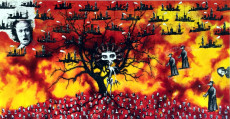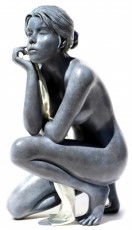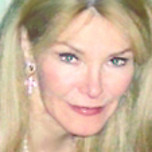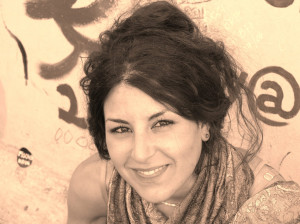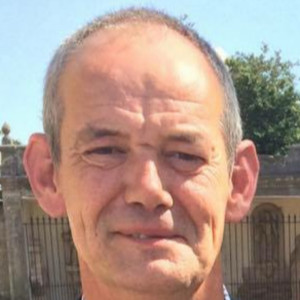
The beautiful rediscovery of Auguste Herbin

About the exhibition “Auguste Herbin (1882-1960)” on view at the Montmartre museum in Paris until September 15, 2024.
Sometimes, I get tired of big exhibitions that attract us like flies with their names of famous artists. Obviously I let myself be titillated like everyone else! It's so exciting and reassuring at the same time, to say to yourself that you shouldn't miss the event, that this artist is great, that we already know it so we're definitely going to enjoy it... But there always has the verb “to do”. And that annoys me. Did you do Rothko at the Louis Vuitton Foundation? Did you do Mucha in Aix-en-Provence? Did you do Chagall in Nice? Did you do Valadon in Nantes or Metz? Have you done Dali, Picasso, Modotti, Magritte? Brief. Yes I did. Great. No, I didn't. Oh my, that’s really a shame. Couldn't we instead ask ourselves if we've smelled anything strong recently? What if we discovered a work? If we vibrated, if we learned, if we hated, if we were disturbed? What if we were surprised? Because ultimately, this is often what is missing in the exhibitions of highly publicized “stars”. The surprise.
I really like the little Montmartre museum for that. For its tea room and its garden too, of course. For Suzanne’s workshop obviously. But above all for its temporary exhibitions which have the knack of always teaching me something new. If you haven't been there yet during a walk in Paris, don't hesitate to climb the hill, you shouldn't be disappointed. The press relations department must have expanded there in recent years, because I don't remember that there was so much talk in the past about its programming in art magazines. I'm not going to complain about it: this month, Beaux Arts Magazine reminds me to go there before September 15, just to familiarize myself with pleasure with a certain Auguste Herbin (1882-1960), whose name actually rings a bell to me, without me being able to immediately place it in my mental art history book.
“It’s not his name that comes to mind when we think of abstraction,” immediately recognizes Emmanuelle Lequeux, whose article I enjoyed reading in Beaux Arts Magazine in March. The beautiful writing of this journalist refreshed my memory. Indeed, I had regularly seen the name of Herbin cited quickly alongside artists embarked on the adventure of Cubism and the Bateau-Lavoir. But he was immediately eclipsed by Picasso, Braque, Juan Gris and Max Jacob. As for the abstraction, I must have missed an episode. “Auguste Herbin was, however, one of the most radical and fiercest links. The Montmartre museum rehabilitates this uncompromising artist who dreamed of reconciling the avant-garde with the people. » I like that already. As a good communicator, the Parisian establishment, adept at sidestepping, does not hesitate to affirm that Herbin is “the best-kept secret of the adventure of modern art”… This is largely as enticing as a common name already on everyone's lips, isn't it?
“He grew up amid the clicking of the looms, the tireless comings and goings of the shuttle, the child of weavers from the north of France. Born in Quiévy, raised a stone's throw from there, in Cateau-Cambrésis, like Matisse, Auguste Herbin grew these geometries into landscapes in the heart of the cereal plains of Thiérache. Did he learn, from his early years, the evocative power of abstraction? This would taint his life with too much determinism. Because it was as a free man that he built his destiny, to which nothing predestined him. Until becoming this “obstinate researcher of the pictorial absolute” described by the painter Geneviève Claisse (1935-2018), who did a lot to ensure that he did not sink into oblivion. » When I told you that Emmanuelle Lequeux’s writing is candy that melts under the tongue…
So I, of course, cannot resist a little digression: but who is Geneviève Claisse? A painter born in Quiévy too. Fifty-three years after Auguste Herbin. Whom she discovered one day was a distant relative, whom she met, and who encouraged her to paint. She became the author of the catalog raisonné of his work. But did she also do so that we wouldn’t forget her? “The French artist Geneviève Claisse, a figure of geometric abstraction, who invented a language made of elementary shapes, circles, triangles, squares, died Monday at the age of 82, after an accident,” announced the Journal des Arts and La Voix du Nord, May 3, 2018. Two years earlier, the Matisse museum in Cateau-Cambresis devoted a retrospective to her, and she was still preparing an exhibition in London. His works of art for sale are particularly well represented by the Fleury art gallery in Paris, and can reach several thousand euros when they are auctioned on the art market. It remains to be seen whether its rating will increase over the years… or not.
But let's come back to our dear Auguste Herbin. Yes yes, I get attached easily. Although the man must not have been easy to live with. As a teenager, he already worked as a clerk for a bailiff. Which did not prevent him from taking all the municipal drawing courses he could, at Le Cateau, then in Cambrai. The son of workers had a clear destiny at the Seydoux textile factories. “From which fabrics with geometric designs come out, too. But the kid is damn good. Gold medal ! Thanks to a scholarship, he went from 1899 to 1901 to take Pharaon de Winter's classes at the Beaux-Arts in Lille. He is ardent at work, austere in character. A post-impressionist, like everyone else, he creates landscapes mixed with memories of the Flemish Renaissance,” the journalist from Beaux Arts Magazine tells us. In any case, the Seydoux factories are dead for him. Direction Paris, and the artistic scenes of Montmartre and Montparnasse. He left no trace in Céret, elected Occitan capital of the avant-garde, and yet he went to paint there too. Also in Corsica, with the great connoisseur of modern art who was the collector and art dealer Wilhelm Uhde. Because the greatest art collectors were snapping up his paintings to sell at the time.
When Auguste Herbin wanted to move away from Cubism to attack abstraction head-on, guided by his communist ideals leading him to Russian constructivism in order to better combine artistic ideals and social and political utopia, the gallery owner Léonce Rosenberg let him go. The painter, however, will never give up: he wants to reconcile the avant-garde with the people. He wants to make modern art accessible to everyone. “The more abstract the art, the more it identifies with a thousand and one personalities. There is an individual abstract. There is a mass abstract (…) There is, there will be a universal abstract (…),” asserted Auguste Herbin. “Our art can only be monumental and I believe that we will only have true communism when we have this monumental art,” proclaimed in 1918 the man who would develop a “plastic alphabet” between 1940 and 1950. A new language of bright colors offering access to an emancipatory art for all humans. A synaesthetic language as Kandinsky dreamed of.
“Herbin will never give up on this political dream,” Emmanuelle Lequeux explains to us. “His paintings from the 1920s state this very clearly, close to those of other committed artists like Fernand Léger. » Auguste Herbin went so far as to create the Abstraction-Création movement in 1931, with Vantongerloo, Van Doesburg, Hélion, Arp, Delaunay, Tutundjan and Kupka, to be able to create works of art for sale circumventing the new dogma of the communist party having adopted the line of socialist realism. “For this communism in the soul, it is neither god, nor master, nor Supreme Soviet. » Author in 1949 of a book that became a major reference for geometric abstraction and kinetic art, entitled Non-Figurative Non-Objective Art, co-founder of the Salon des Réalités nouvelles, exhibited at Documenta I and II in Cassel, Auguste Herbin eventually became famous while hemiplegic, dying in Paris leaving an unfinished work called Fin. You can't make it up... I just wonder why I hadn't heard more about this master of geometric abstraction until today. But I thank you for the surprise!
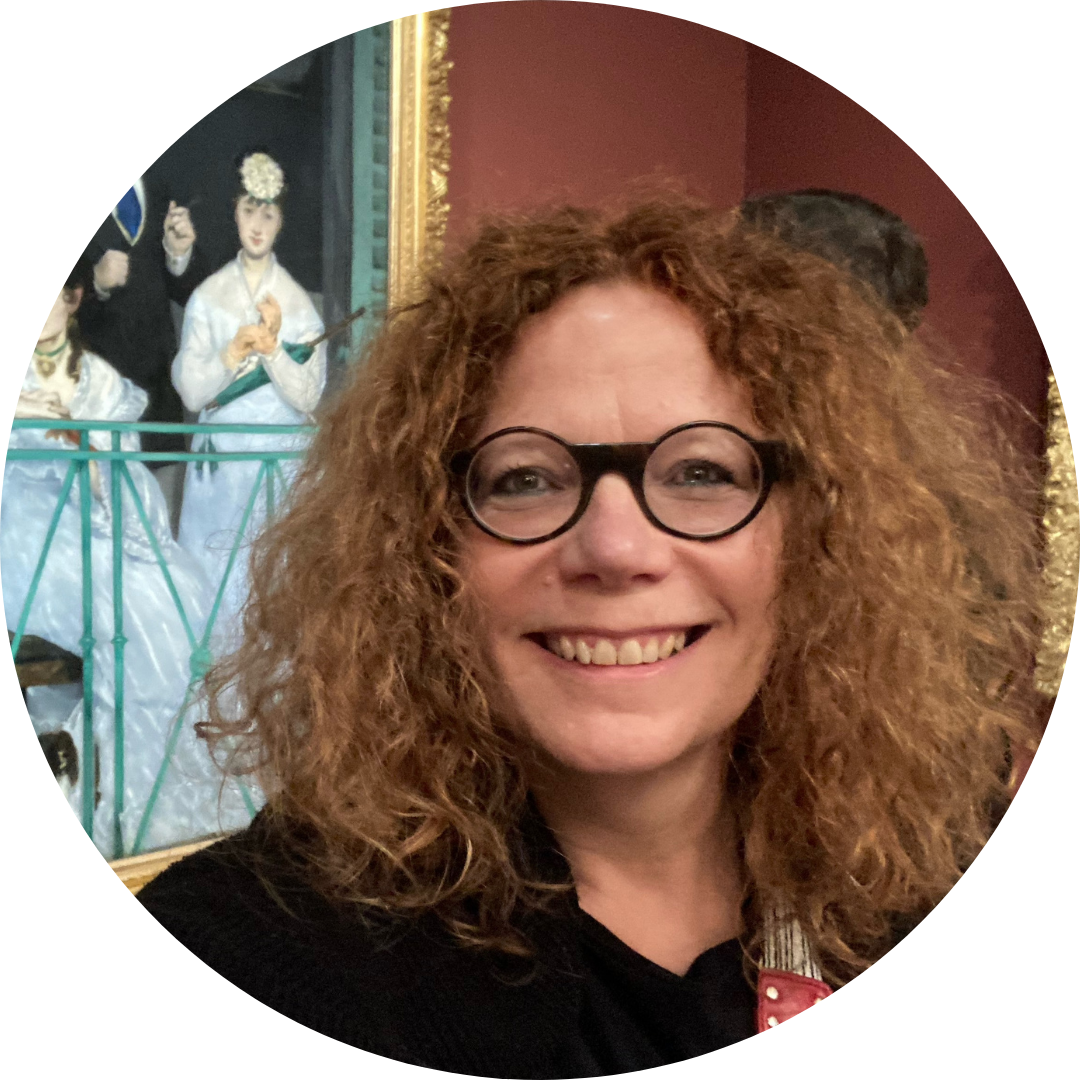 Article written by Valibri in Roulotte
Article written by Valibri in Roulotte
Illustration: Auguste Herbin, Moon, detail, 1945, oil on canvas, Lahumière collection, © Courtesy Galerie Lahumière, Adagp, Paris, 2024



















